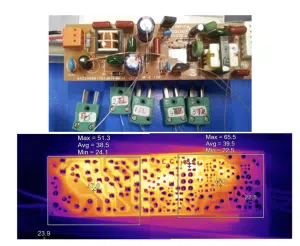The IEEE Intersociety Conference on Thermal and Thermomechanical Phenomena in Electronic Systems (ITherm) was held at the JW Marriott Grande Lakes, Orlando, FL, May 30 – June 2, 2023. This was the 22nd ITherm, which was first held in 1988. The conference was historically held every other year until 2016 when it switched to an annual schedule. ITherm 2023 was sponsored by the … [Read more...]
Statistics Corner: Weibull Distribution
A little over a pandemic ago, the first article in this series on statistical analysis mentioned that a fundamental aspect of statistics is that one assumes a mathematical model that describes the distribution of a data set and then uses that model to estimate the probability that a given value or set of values will occur [1]. This allows us, for example, to estimate whether … [Read more...]
Future Trends in LED Driver System Modeling
Introduction A decade ago, the major players in the lighting industry decided to make the transition to digital systems and set the pace in connected lighting. At present, only a few companies can maintain their leadership. As a self-fulfilling prophecy, the lighting landscape changed remarkably, with scattered competitors having access to internet of things (IoT) ecosystems … [Read more...]
Upper Air Room Disinfection with UV-C Luminaire – Metrics and Multi-Domain Modeling Approach
In my previous article, I questioned how our simulation community of experts can contribute in this pandemic time? I am coming back to present examples of contributions. While the general topic of this article is outside the typical scope of Electronics Cooling Magazine, it does illustrate how analysis methods that are discussed here, such as computational fluid dynamics, and … [Read more...]
Emerging 5G Networks: Potential Economic Benefits of Two-Phase Thermal Management
The fourth and future industrial revolutions will set new requirements for smart cities / factories, autonomous vehicles, augmented reality, smartphones, etc., resulting in more distributed architectures, expanding the convergence of new technologies and developments thus, transforming the term Internet of Things (IoT) to Internet of Everything (IoE). Centralized cloud … [Read more...]
- 1
- 2
- 3
- …
- 13
- Next Page »










